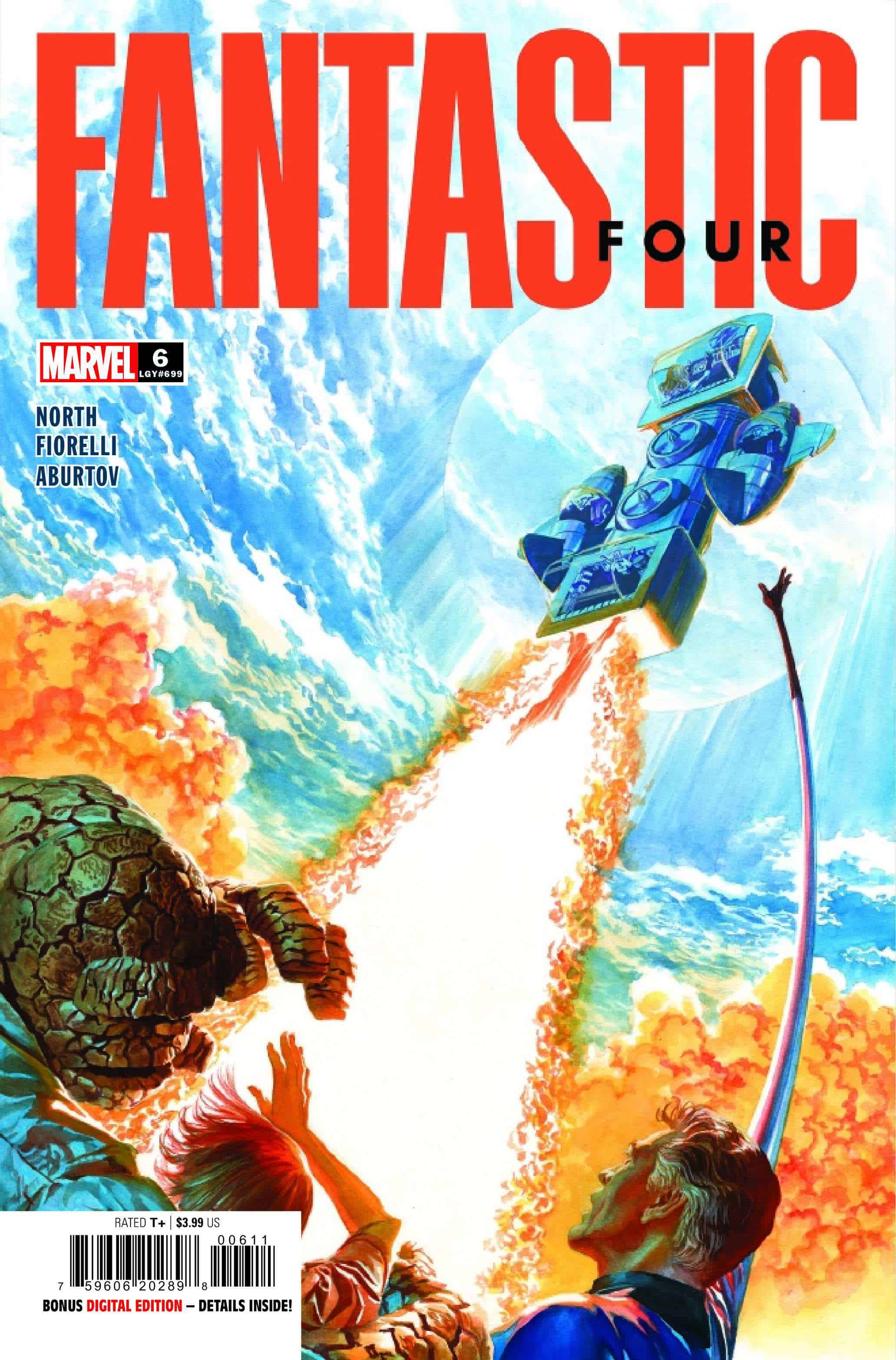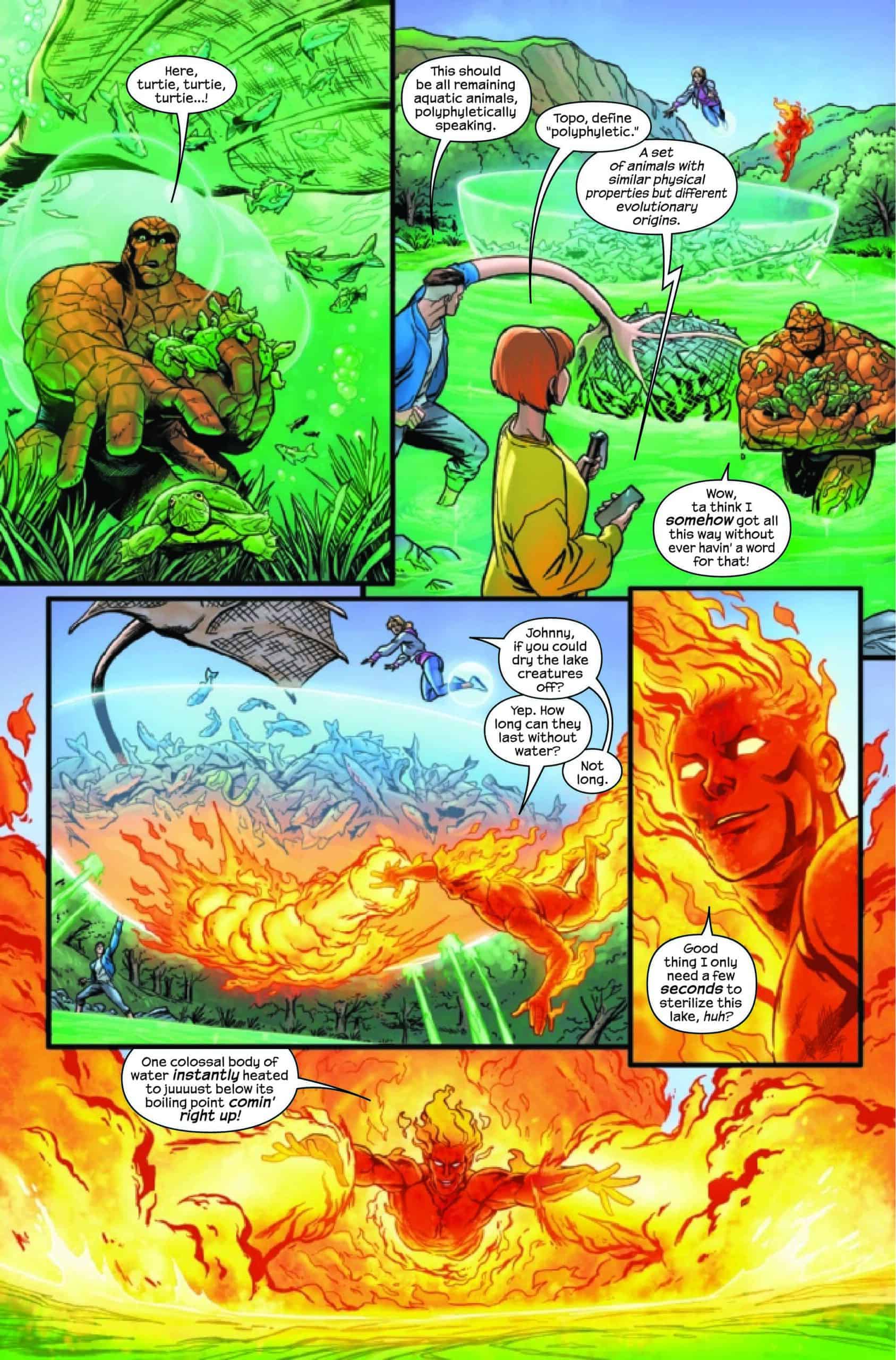Fantastic Four #6

Recap
What happens when the Fantastic Four accidentally threaten all life on the planet? Well, they try to fix it. But what happens when they can't?
I'll tell you what happens: Sue and Johnny team up to pull off their most audacious stunt yet and maybe, just maybe, save us all. Meanwhile, Ben, Alicia and Reed have to convince a skeptical world that what they?re doing is worth it...
Review
Reed Richards is the Fantastic Four member who saves the day when science goes bad. Right? Not this time. Fantastic Four #6 catches up with that mirrored bacteria that survived at the end of the previous issue. It’s spreading fast, and all appears lost until the solution comes from the most unlikely people.

Fantastic Four #6 picks up the morning after the team fixes the molecule mirroring visited upon them by Nicholas Scratch and Salem’s Seven. Unfortunately, at the end of the previous issue, when the Fantastic Four returned from the dimension where they un-mirrored themselves, they didn’t sterilize all the bacteria they brought back. The mirrored bacteria spread quickly. Discovering their error, the team sterilizes the nearest affected lake. But despite their best efforts, they can’t act fast enough to keep the bacteria from spreading further. Now it’s expanding quickly through the immediate area, threatening to get out of control and eventually wipe out all life on Earth. Surprisingly, Johnny comes up with the logical solution: blotting out the sun.
North delivers another solid one-off story in Fantastic Four #6. While the story does feed off of the previous issue’s events, there isn’t a plot connection. Rather than get lost in complicated, multi-issue plots (which are not in and of themselves bad things and are almost certainly coming down the pipe), North spends time in moments of character exploration and humor–the kind of story beats that can quickly become casualties when major plots have to advance. This remains one of the series’ greatest strengths.
A perfect example of these small moments is when Johnny puts forth the blotting out-the-sun idea. North spends a whole page on this, but it’s not about the plot point itself. Instead, it’s about Johnny’s transition from excited revelation upon thinking he’s come up with the solution to sad embarrassment when he concludes that it’s unworkable. One of the six panels on the page is devoted to Johnny sitting in silence, looking dejected. In the next panel, Reed declares that Johnny’s idea might work.
North puts the same care into the humor. As the issue continues, North cuts between Sue and Johnny enacting the solution and Reed, Ben, and Alicia on the ground dealing with the fallout of the sun being blocked out for three days. There’s a ridiculous press conference as the trio announces they’re blotting out the sun unilaterally. This is followed by other moments with no real plot value but maintains a sense of fun to balance the more severe problem-solving storyline.
Fantastic Four #6 also continues the trend of North, including believable science in his storytelling. Surely blotting out the sun will have catastrophic consequences! Well, perhaps not. North includes a sequence where Reed explains why such an idea could work and the potential effects of such action.
Fiorelli returns for art duties on Fantastic Four #6. His winning moment by far is that same page when Johnny offers his unorthodox solution to the problem of the mirrored bacteria. North’s script creates the moment, but without Fiorelli’s realization of the different emotions on Johnny’s face, the moment would fall flat. Fiorelli communicates a somewhat surprising vulnerability when Johnny thinks his idea is stupid. In the course of four panels, Fiorelli moves the focus of the issue squarely onto Johnny, and it only enhances the overall narrative.
Fiorelli also adds subtle touches, such as Reed and Johnny both growing stubble as their work to solve this problem continues over multiple days. It’s a seemingly insignificant choice, but it underscores that no one is taking it easy as they devote all their time to their work.
Compared to the last issue, Aburtov’s coloring here is very low-key. He makes good choices to show the difference between twilight and pitch black at various points in the case, as very little of the issue is spent in daylight. However, what remains consistent is that Aburtov ensures that Johnny steals the show in every panel where he’s on fire. He’s constantly layered in rich oranges and yellows, and no matter what else is on the page, Johnny is where your eyes will go.
“Efficient” is the best way to describe Caramagna’s lettering in this issue. It’s even more restrained than usual, with dialogue and dialogue bubbles standard on all three occasions. No caption boxes in this issue limit additional opportunities for creativity. Sound effects are few and far between and somewhat lacking in energy. In the more dialogue-heavy panels, of which there are not very many, Caramagna does a good job organizing them to remain unobtrusive. Indeed, nothing about the lettering detracts from the issue. But for better or worse, nothing about it adds to the issue either.
Final Thoughts
This series’ charm lies in North’s ability to blend clever stories with the humor and sense of family inherent in the team’s interactions. In Fantastic Four #6, his script, combined with the art team’s talents, creates a fun and surprisingly introspective Johnny story. Everyone should give this Fantastic Four series a look at least once.
Fantastic Four #6: There Goes the Sun
- Writing - 10/1010/10
- Storyline - 10/1010/10
- Art - 10/1010/10
- Color - 9/109/10
- Cover Art - 9/109/10





